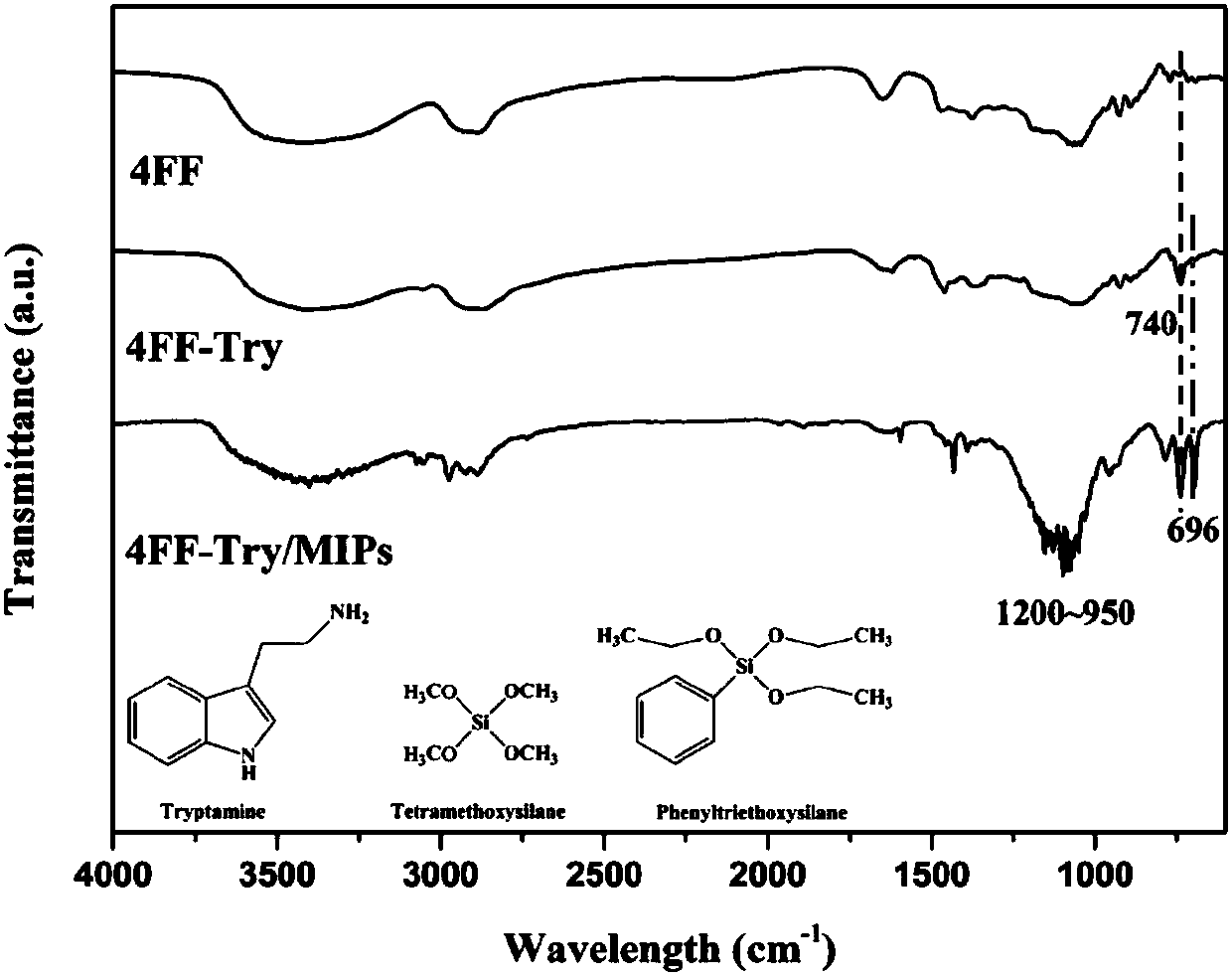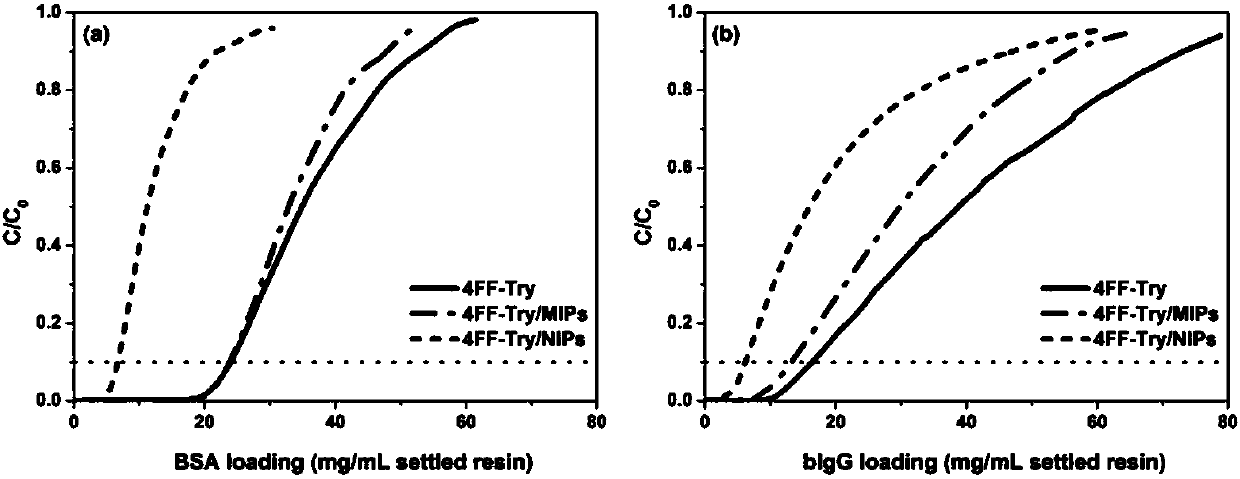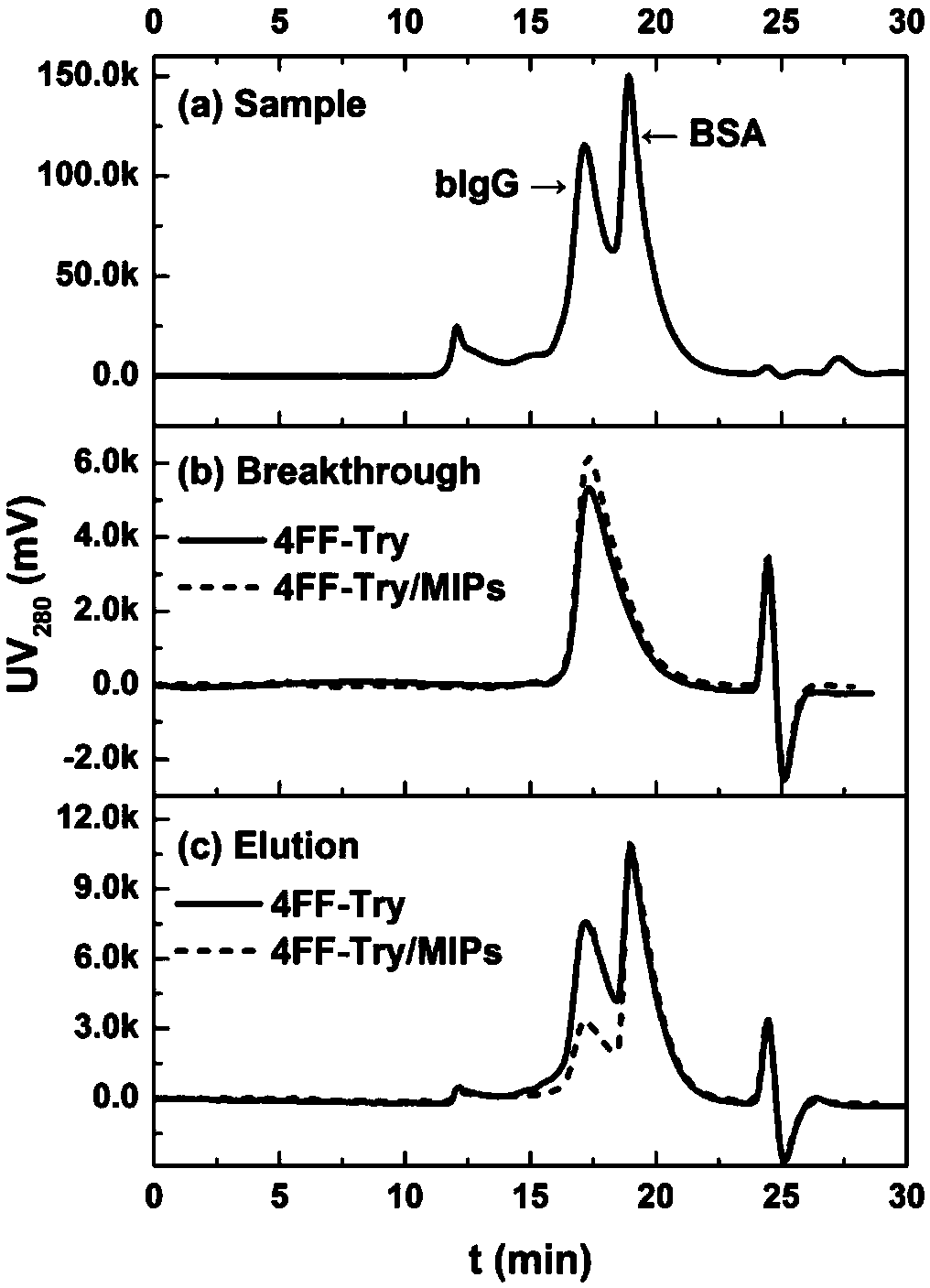Dual-mode identification chromatographic medium and preparation method thereof
A chromatographic medium and dual-mode technology, applied in chemical instruments and methods, other chemical processes, alkali metal oxides/hydroxides, etc., can solve problems such as mass transfer efficiency and complex size that hinder the imprinting process, and achieve excellent durability Salt adsorption capacity, retention of adsorption performance, effect of preventing competitive adsorption
- Summary
- Abstract
- Description
- Claims
- Application Information
AI Technical Summary
Problems solved by technology
Method used
Image
Examples
Embodiment 1
[0021] Get 10g of agarose gel microspheres, and tryptamine is used as a ligand to prepare a mixed-mode chromatography medium. The medium was drained, and protein with 3 times the saturated adsorption capacity was added, and then adsorbed in 20mM buffer solution, the pH was 5, the temperature was 25°C, and the shaker was 120rpm for 12 hours. Add 1:3 tetramethoxysilane and phenyltriethoxysilane to the adsorption system, adjust the pH to 9.3 with ammonia water, and carry out the polymerization reaction. The reaction time is 1 hour. Use 0.1M hydrochloric acid solution, 0.1M sodium hydroxide solution and deionized water to wash the medium in order to destroy the hydrophobic force between the protein and the ligand, desorb the template protein, and obtain a dual-mode recognition chromatography medium. According to the nitrogen adsorption method, the average pore size of the medium is 33.3nm.
Embodiment 2
[0023] Get 10g of agarose gel microspheres, and tryptamine is used as a ligand to prepare a mixed-mode chromatography medium. The medium was drained, and protein with 3 times the saturated adsorption capacity was added, and then adsorbed in 20mM buffer solution, the pH was 5, the temperature was 25°C, and the shaker was 120rpm for 12 hours. Add 1:3 tetramethoxysilane and phenyltriethoxysilane to the adsorption system, adjust the pH to 9.3 with ammonia water, and carry out the polymerization reaction. The reaction time is 2 hours. Use 0.1M hydrochloric acid solution, 0.1M sodium hydroxide solution and deionized water to wash the medium in order to destroy the hydrophobic force between the protein and the ligand, desorb the template protein, and obtain a dual-mode recognition chromatography medium. According to the nitrogen adsorption method, the average pore size of the medium is 27.7nm.
Embodiment 3
[0025] Get 10g of agarose gel microspheres, and tryptamine is used as a ligand to prepare a mixed-mode chromatography medium. The medium was drained, and protein with 3 times the saturated adsorption capacity was added, and then adsorbed in 20mM buffer solution, the pH was 5, the temperature was 25°C, and the shaker was 120rpm for 12 hours. Add 1:3 tetramethoxysilane and phenyltriethoxysilane to the adsorption system, adjust the pH to 9.3 with ammonia water, and carry out the polymerization reaction. The reaction time is 4 hours. Use 0.1M hydrochloric acid solution, 0.1 M sodium hydroxide solution and deionized water to wash the medium sequentially, destroy the hydrophobic force between the protein and the ligand, desorb the template protein, and obtain a dual-mode recognition chromatography medium. According to the nitrogen adsorption method, the average pore size of the medium is 26.7nm.
PUM
| Property | Measurement | Unit |
|---|---|---|
| Dissociation constant | aaaaa | aaaaa |
| Dissociation constant | aaaaa | aaaaa |
| Dissociation constant | aaaaa | aaaaa |
Abstract
Description
Claims
Application Information
 Login to View More
Login to View More - R&D
- Intellectual Property
- Life Sciences
- Materials
- Tech Scout
- Unparalleled Data Quality
- Higher Quality Content
- 60% Fewer Hallucinations
Browse by: Latest US Patents, China's latest patents, Technical Efficacy Thesaurus, Application Domain, Technology Topic, Popular Technical Reports.
© 2025 PatSnap. All rights reserved.Legal|Privacy policy|Modern Slavery Act Transparency Statement|Sitemap|About US| Contact US: help@patsnap.com



